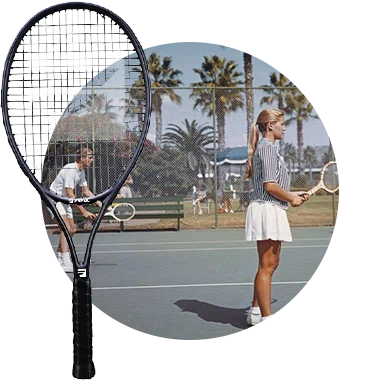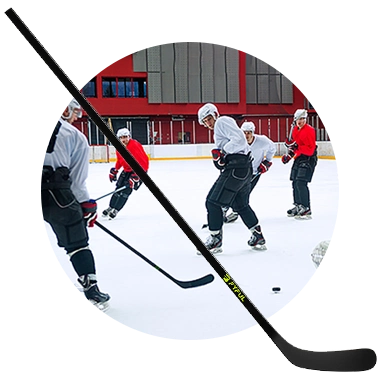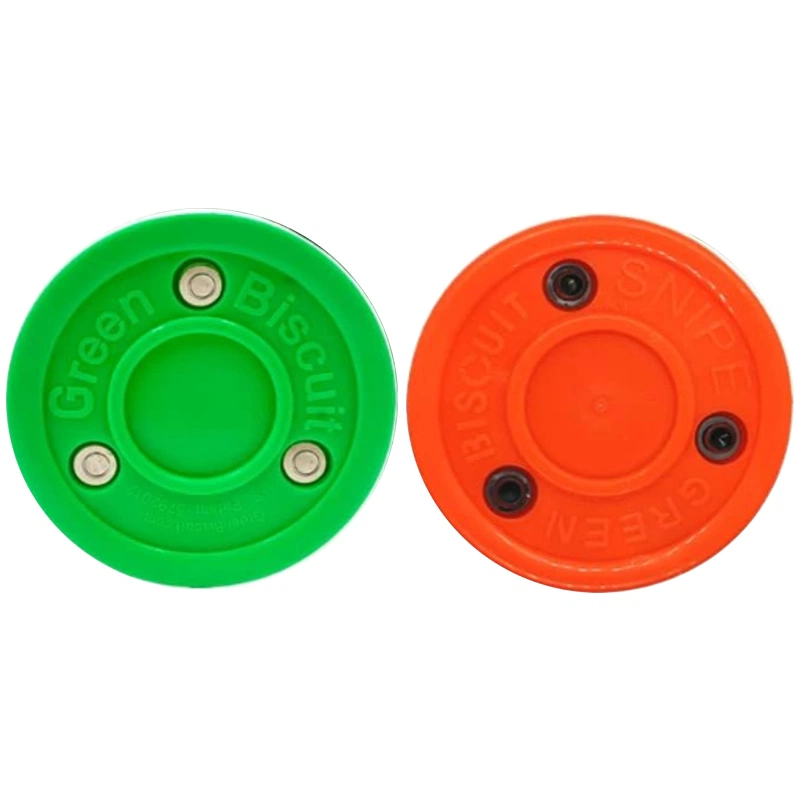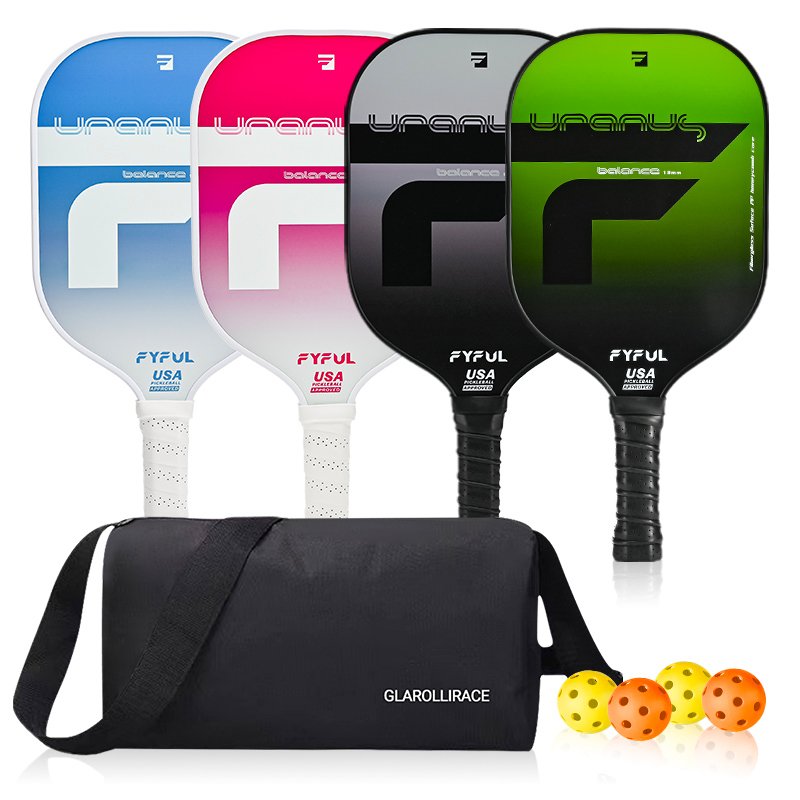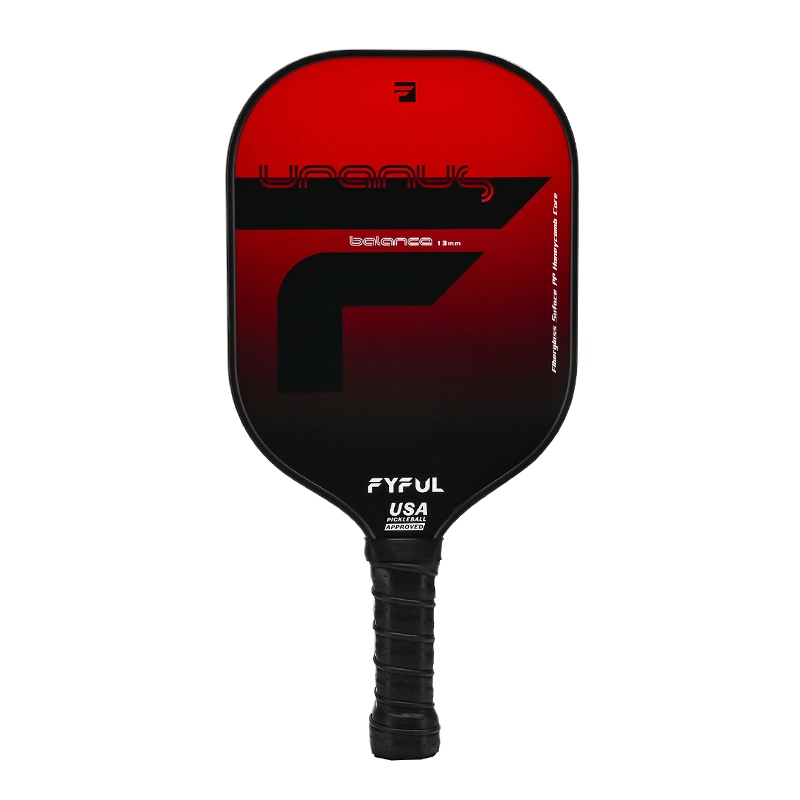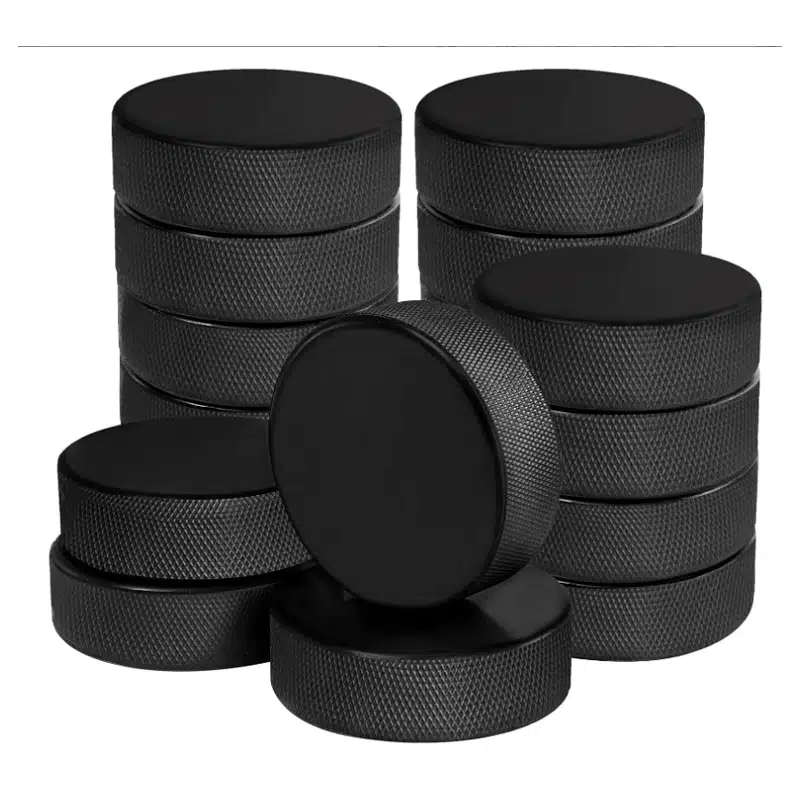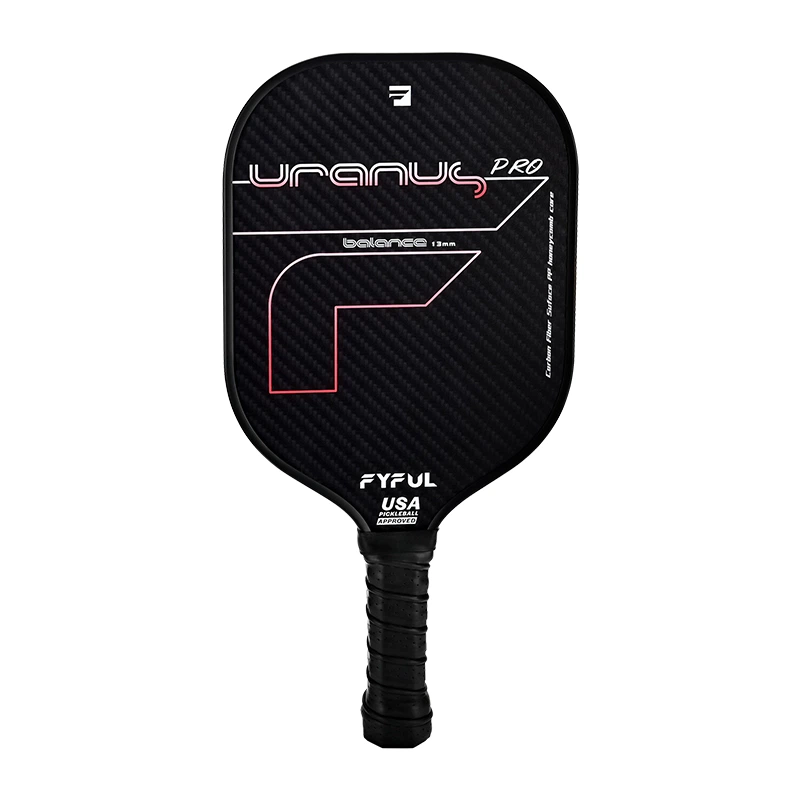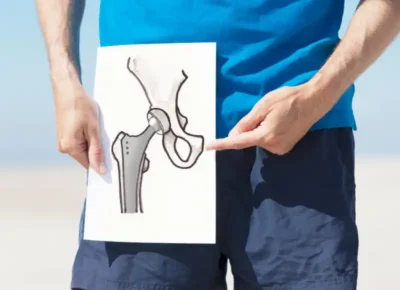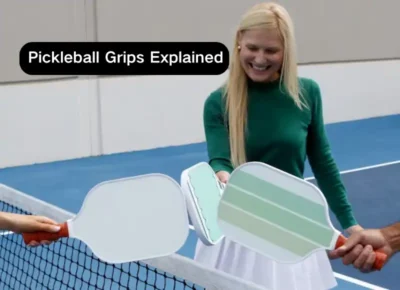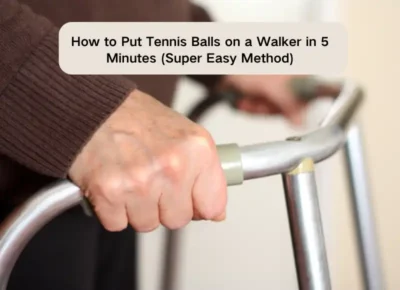Table of Contents
Pickleball grips are the foundation of every shot you take. You know that frustrating moment when your paddle slips mid-swing? Or when your forehand feels perfect but your backhand falls flat? Your grip is the problem — and it’s costing you points.
Most players obsess over paddle technology while ignoring the one connection point between them and their equipment. The right grip transforms your control, power, and consistency. Yet countless players stick with whatever grip they learned first, never realizing what they’re missing.
Here’s what we’ll cover:
- Continental, Eastern, and Western grips explained
- Grip strength secrets pros use
- Quick-switch techniques between grips
- Common grip mistakes are killing your game
- Practice drills that work
At FYFUL, we’ve spent 10+ years perfecting sports equipment. We know grips inside out because we manufacture them. Our gear helps players at every level get that perfect connection between hand and paddle.
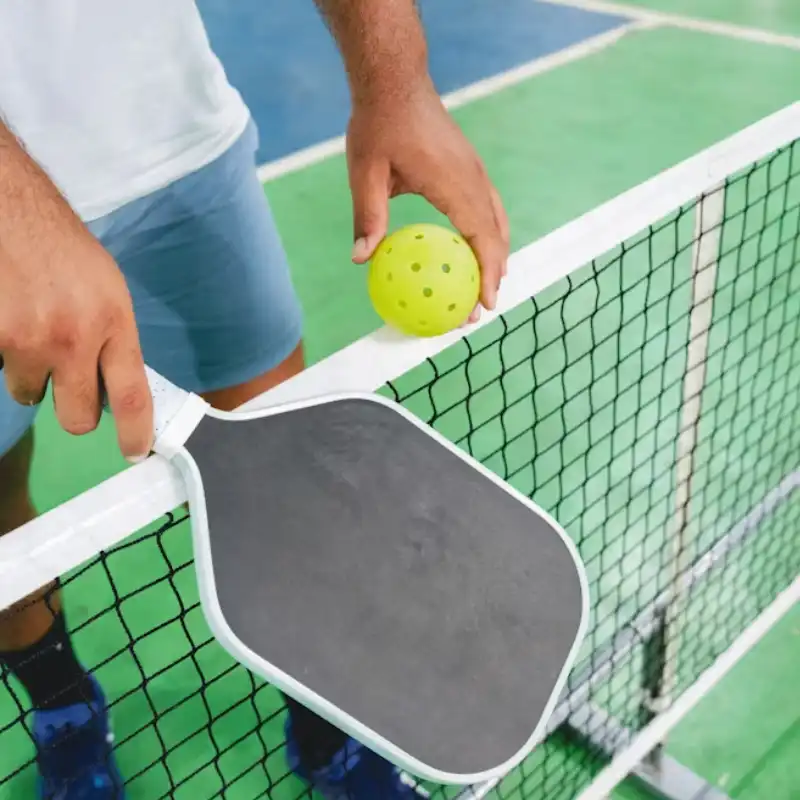
Pickleball Grips Explain
1. Continental pickleball Grips (Standard/Neutral)
The Continental pickleball grip is your Swiss Army knife on the court, and one of the most reliable pickleball grips every player should master. Think of it as the foundation grip that every player needs to master first.
How to Hold
Picture shaking hands with your paddle. That’s it. Place the base knuckle of your index finger on the first bevel (the top edge when the paddle face is perpendicular to the ground). Your thumb and index finger should form a “V” that points straight up the handle.
The grip should feel natural — like you’re holding a hammer, which is a hallmark of most effective pickleball grips. Wrap your fingers around the handle with medium pressure. Too tight and you’ll tire quickly. Too loose and you’ll lose control.
Best For
This grip shines for:
- Serves (especially spin serves)
- Volleys at the net
- Defensive blocks
- Quick exchanges at the kitchen line
- Overhead smashes
Pros & Cons
Pros:
- Versatile for most shots
- Easy transition to other grips
- Natural wrist position reduces strain
- Perfect for beginners
Cons:
- Limited topspin on groundstrokes
- Less power on forehand drives
- Can feel awkward for aggressive baseline play
The Continental grip gives you solid fundamentals. Master this first, then expand your grip arsenal.
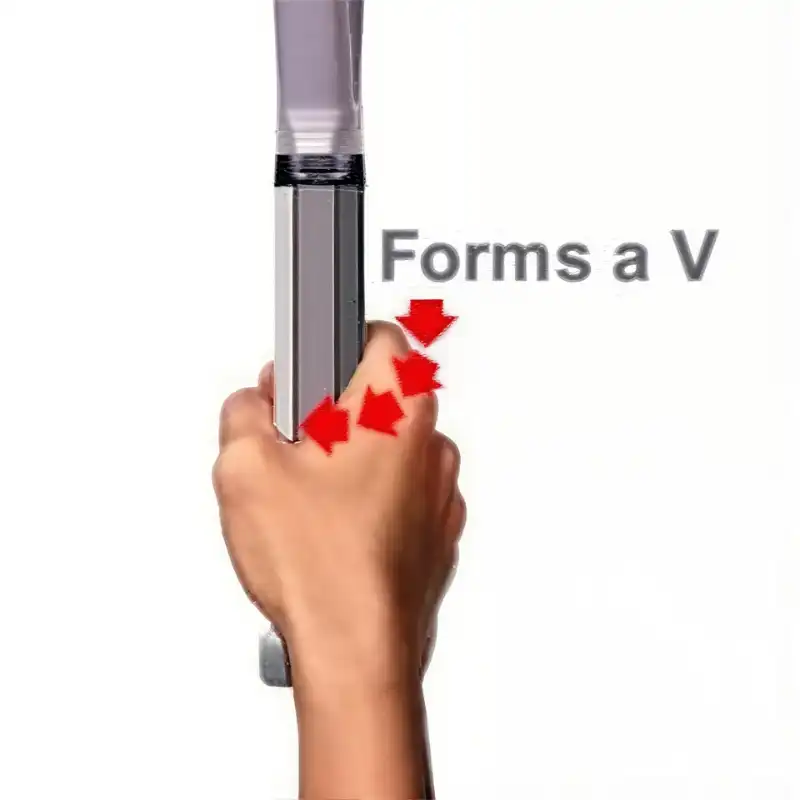
Continental pickleball Grips (Standard/Neutral)
2. Eastern Pickleball Grip
The Eastern pickleball grip bridges the gap between control and power, making it one of the most versatile pickleball grips for intermediate players. It’s the versatile middle ground that intermediate players gravitate toward once they’ve mastered the continental.
How to Hold
Start with your paddle perpendicular to the ground. Place your base knuckle on the second bevel (one position clockwise from continental). Your palm sits more behind the paddle handle, creating a slight angle that feels like holding a frying pan.
For the eastern backhand grip, rotate your wrist slightly counterclockwise. This positions your knuckle on the top bevel, giving you more leverage for backhand shots.
Best For
The eastern grip excels at:
- Forehand shots with moderate topspin
- Controlled drives from baseline
- Backhand side attacks
- Transitioning between forehand and backhand shots
- Mid-court rallies
Pros & Cons of Eastern Pickleball Grip
Pros:
- More topspin than continental
- Comfortable for extended rallies
- Natural grip pressure distribution
- Easier power generation on forehands
Cons:
- Requires grip adjustment for serves
- Less effective for volleys
- Slower transition to defensive shots
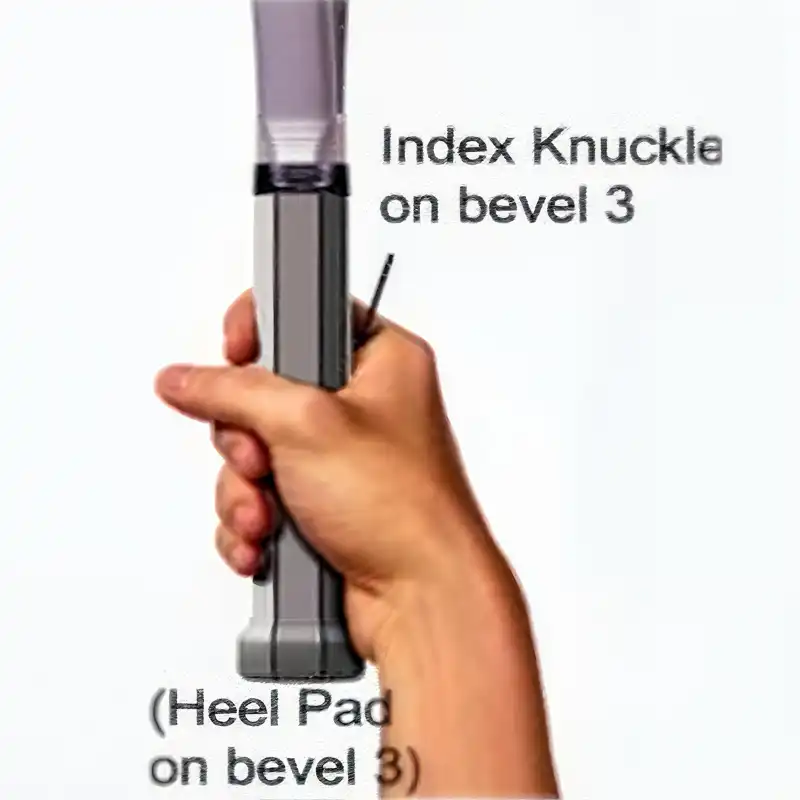
Eastern Pickleball Grip
3. Western Pickleball Grip
The Western pickleball grip is your power tool, widely considered the most aggressive of all pickleball grips. Advanced players use this aggressive style to dominate from the baseline.
How to Hold
Rotate your hand even further clockwise than eastern. Your base knuckle lands on the third or fourth bevel. This extreme position puts your palm almost underneath the paddle handle — imagine holding the paddle like a hammer grip from below.
Some players prefer a semi-western grip as a compromise, placing their knuckle between the second and third bevels.
Best For
Western grip styles dominate in:
- Heavy topspin forehands
- High-bouncing balls
- Aggressive baseline play
- Power shots from the back court
- Two-handed backhand setups (as the bottom hand)
Pros & Cons
Pros:
- Maximum topspin potential
- Explosive forehand power
- Great for attacking high balls
- Natural wrist lag for acceleration
Cons:
- Difficult for low balls
- Weak on the backhand side without switching
- Poor for net play
- Requires significant grip changes between different grips
The western grip demands more from your technique but rewards you with devastating groundstrokes. Just remember — it’s not for every shot.
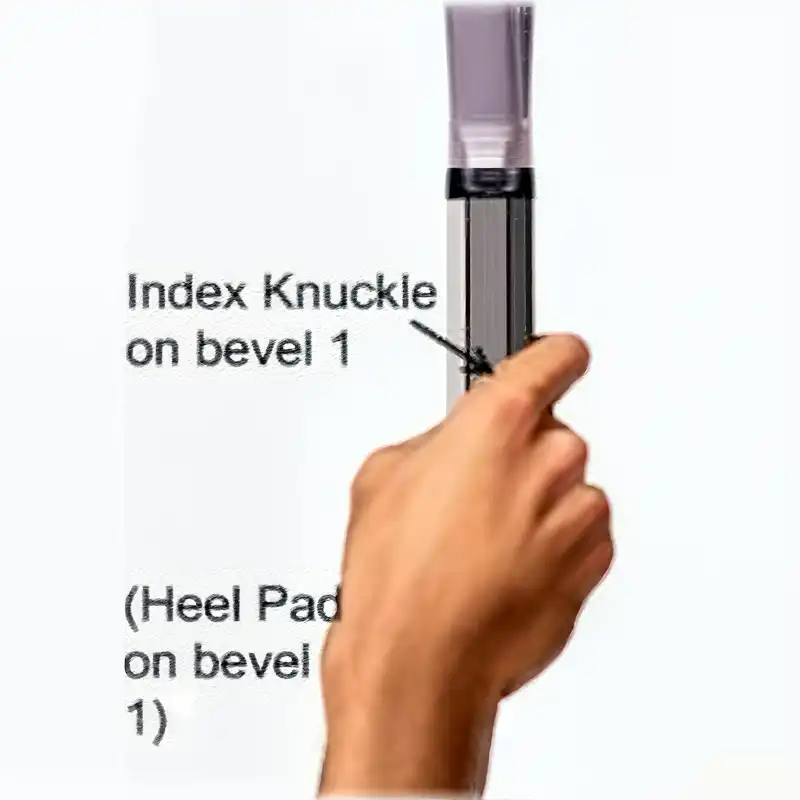
Western Pickleball Grip
4. Comparison: Continental vs. Eastern vs. Western Grip
Understanding how each grip works helps you choose the right tool for specific shots, which is why comparing pickleball grips is essential for every player. Here’s the breakdown:
| Grip Type | Power | Control | Topspin | Best Use |
|---|---|---|---|---|
| Continental | ★★☆ | ★★★ | ★☆☆ | Serves, volleys, drop shots |
| Eastern | ★★★ | ★★★ | ★★☆ | All-around play |
| Western | ★★★ | ★★☆ | ★★★ | Baseline drives |
- Continental gives you more control in the non-volley zone. It’s perfect for quick transitions and touch shots. Think of it as your default grip — especially beginners should start here.
- Eastern offers the sweet spot between power and precision. Your index knuckle position allows natural wrist action for both forehand and backhand shots. Left-handed players simply mirror the position.
- Western delivers maximum power and helps generate topspin like in table tennis. But you sacrifice versatility — switching to other grips takes longer.
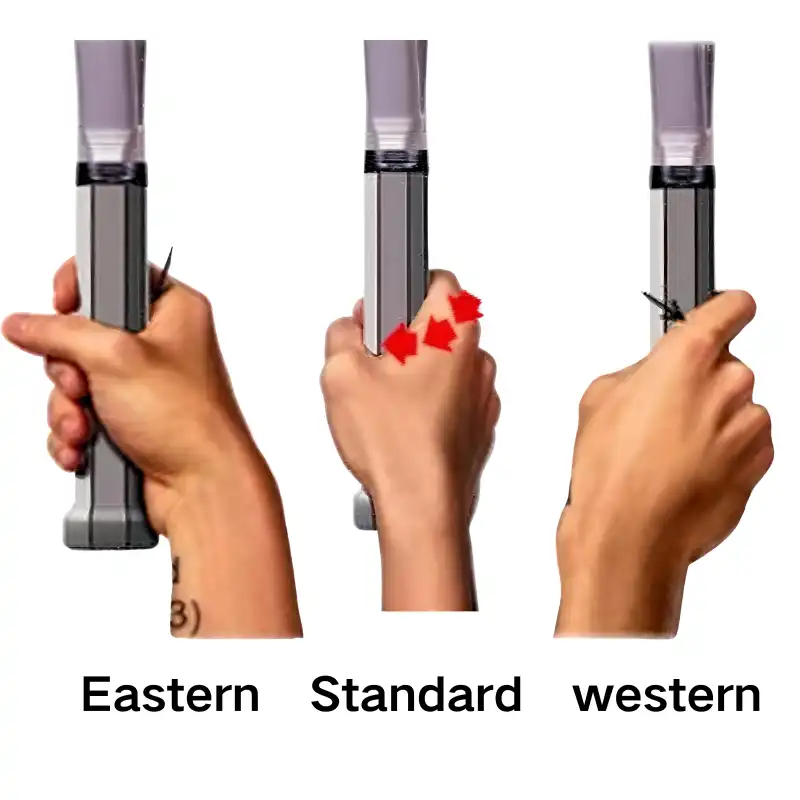
Comparison: Continental vs. Eastern vs. Western Grip
5. Grip Strength
Here’s what most players get wrong: Grip pressure isn’t constant, and learning how it interacts with different pickleball grips can dramatically improve shot consistency. You need a dynamic approach.
The 1-10 Scale:
- Rest position: 3-4 (relaxed but ready)
- Contact point: 6-7 (firm control)
- Power shots: 8-9 (maximum transfer)
Your paddle hand should breathe between shots, no matter which pickleball grips you are using. A constant death grip causes fatigue and reduces sensation. Generally speaking, lighter pressure gives better traction on touch shots while firmer grips help with drives.
Pickleball Grip Technique
Mastering technique means understanding when to use each grip, not just how — this is the true art of switching pickleball grips effectively.
Foundation Elements:
- Keep your opposite hand on the paddle between points
- Rotate slightly clockwise or counterclockwise based on the next shot
- Let your wrist lead the grip change
- Maintain a consistent hand position up the handle
For pickleball shots requiring more power, choke down slightly. For more control and reach, extend your grip higher. This subtle adjustment makes a huge difference on pickleball courts.
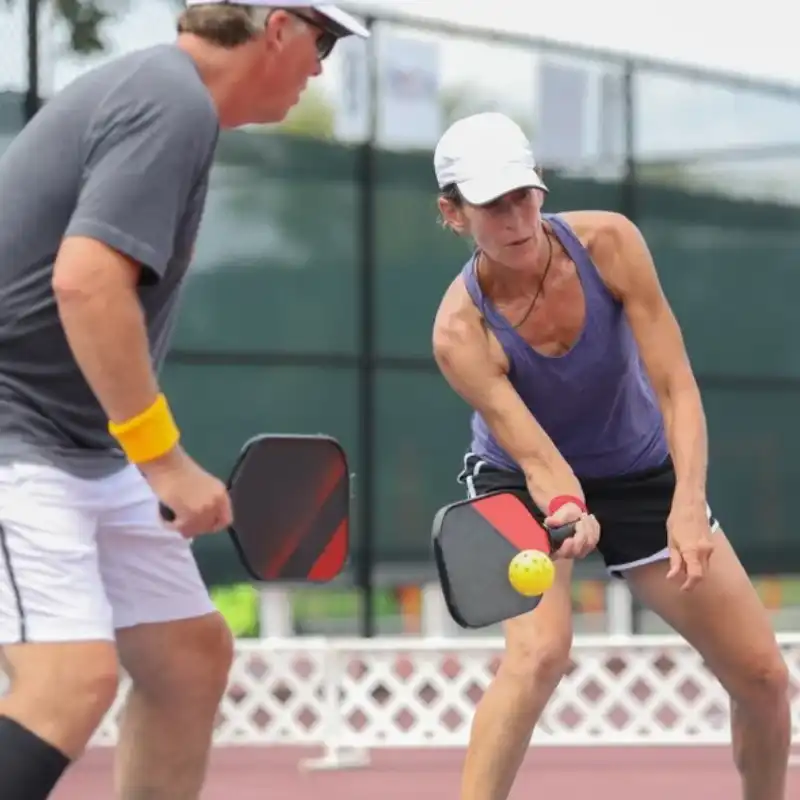
Source:https://pickleballsuperstore.com/blogs/pickleball-blog/how-to-hold-a-pickleball-paddle?srsltid=AfmBOopul2t8QoIb2-pdSUZlCv8AvwgMr3uqjIgKvcDVe9WpRh6YEKV5
6. Switching Between Grip Techniques
Smooth transitions between different pickleball grips separate intermediate from advanced players. Here’s how to develop that flow:
The Two-Touch Method:
- First touch: Release pressure with your paddle hand
- Second touch: Guide with the opposite hand while rotating
Practice this progression:
- Continental to Eastern (one bevel rotation)
- Eastern to Continental (reverse)
- Continental to Western (two bevel jump)
- Emergency switches mid-rally
Pro tip: Use the time between your opponent’s contact and yours. That split second is your window for adjustment.
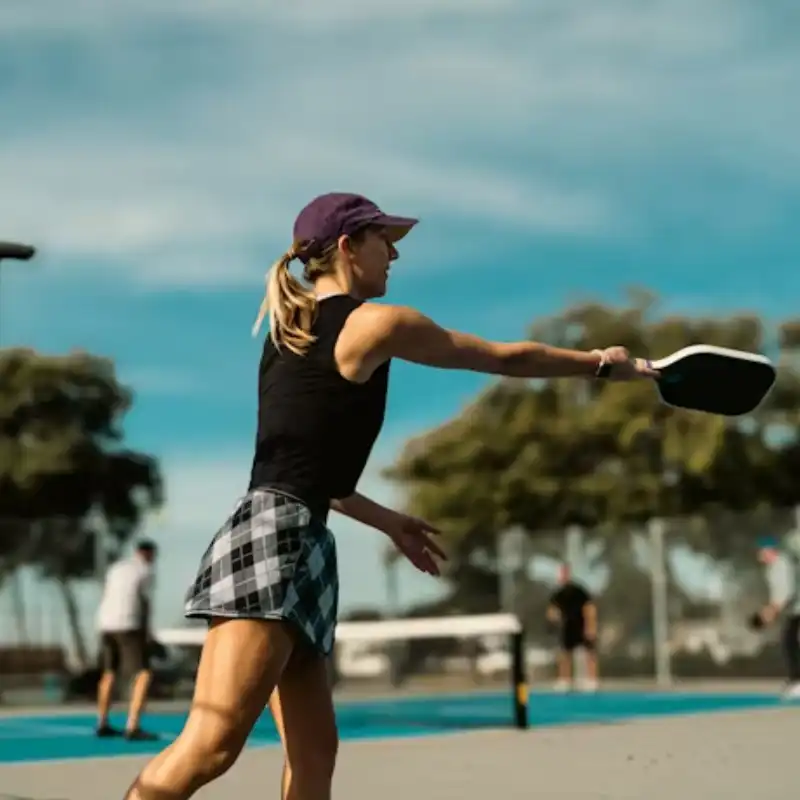
More practice catching the ball
7. Common Mistakes to Avoid
- Death Grip Syndrome: Squeezing too tightly can kill your touch and exhaust your forearm. Relax between shots.
- One Grip Wonder: Refusing to switch pickleball grips limits your game. Each grip has its purpose — use them.
- Rushed Transitions: Panicking during grip changes leads to mishits. Start switches earlier in your ready position.
- Ignoring the Pinky: Your pinky finger provides stability. Don’t let them hang loose off the handle.
- Wrong Grip for Spin: Trying to generate top spin with a continental grip fights physics. Switch to eastern or western for heavy rotation.
Practice Tips
Build muscle memory with these focused drills:
- Wall Rally Progression
- 50 continental grip volleys
- 50 eastern grip drives
- 25 grip switches mid-rally
- Shadow Swings: Practice grip transitions without a ball. Focus on smooth rotation and consistent pressure. Do 10 reps of each switch combination.
- Partner Feed Drill: Have someone alternate between high and low feeds. Use Western for high balls, Continental for low ones. This forces real-time grip decisions.
- Kitchen Line Challenge: Stand at the non-volley zone, hitting rapid exchanges. Use only a continental grip to build that foundation. Aim for 100 consecutive hits.
You’re training your hands to think independently. Start slow, build consistency, then add speed. Your pickleball grips game transforms when switching becomes automatic.
Looking to upgrade your equipment? Check out FYFUL’s Custom Pickleball Paddle Service for paddles designed with optimal grip comfort in mind.
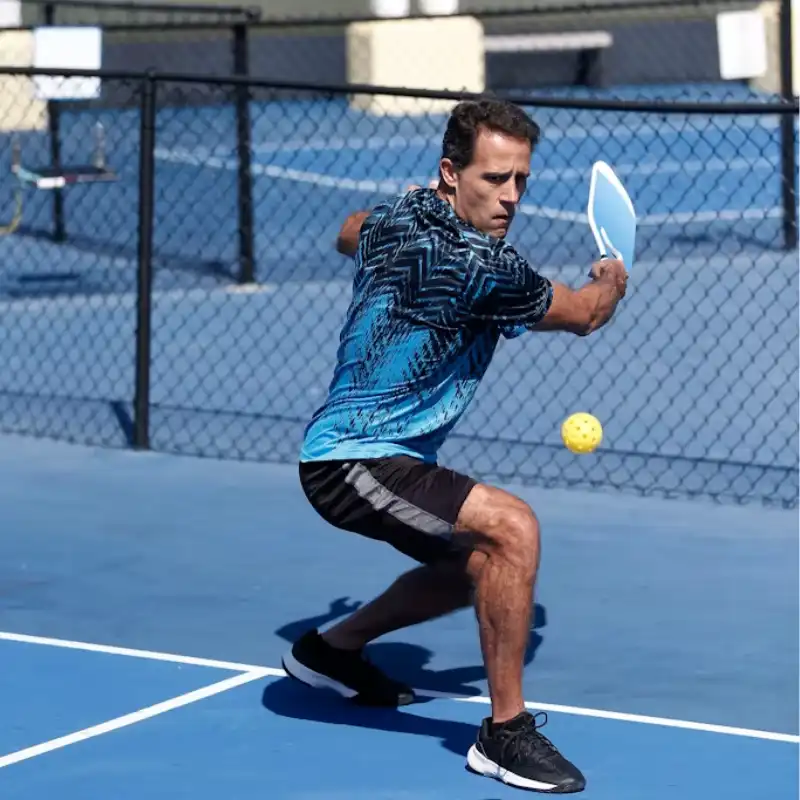
training your hands to think independently
Ready to Master Your Grip Game With FYFUL Equipment?
Your pickleball grips are the foundation of every shot, from volleys to drives. Continental for control, eastern for versatility, western for power — each has its moment. The magic happens when you seamlessly flow between them.
Key takeaways:
- Start with a continental grip as your base
- Match grip to shot type and court position
- Keep grip pressure dynamic (3-4 at rest, 6-7 at contact)
- Practice transitions until they’re automatic
- Avoid death grips and one-grip syndrome
We’ve helped players of the pickleball game perfect their pickleball grips for over two decades. FYFUL’s Pickleball Paddle collection features ergonomic handles and premium grip materials that make transitions smoother and reduce hand fatigue. Because when your equipment works with you, not against you, those grip switches become second nature.
Ready to take your game further? Explore FYFUL’s comprehensive pickleball equipment collection, featuring professional-grade paddles tailored to suit every grip style.
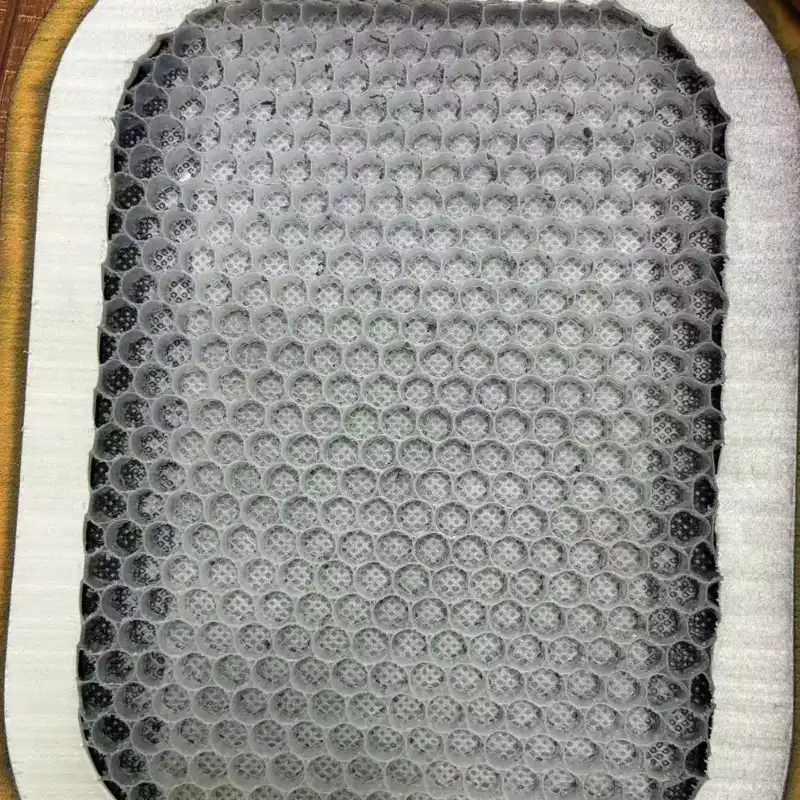
FYFUL pickleball paddle core
FAQs
How to determine the grip size for a pickleball paddle and choose the right pickleball grips?
Measure from the middle crease of your palm to the tip of your ring finger. This measurement (typically 4″ to 5″) equals your ideal grip circumference and helps you select the most comfortable pickleball grips. You can also test by holding a paddle — there should be a pencil-width gap between your fingertips and palm.
Too small? Your hand overworks. Too large? You lose wrist flexibility. When in doubt, go smaller and add overgrip tape.
How to wrap pickleball grips on a paddle handle?
Start at the bottom of your paddle handle. Peel 3 inches of tape backing and anchor it at the butt cap. Wrap upward with slight overlap (about 1/4 inch) while maintaining consistent tension.
Stretch the tape gently as you spiral — this ensures it stays put during play. Finish at the top with electrical tape or the included finishing tape. Trim excess with scissors for a clean edge.
How to clean a pickleball paddle grip?
Never use harsh chemicals or submerge the handle. Dry immediately with a clean towel. Replace grips showing wear — typically every 2-3 months for regular players.
Do pro pickleball players switch grips?
Watch any pro match and you’ll see constant grip adjustments. Ben Johns switches between continental and eastern dozens of times per game. Anna Leigh Waters uses western for her signature drives, then shifts to continental at the kitchen.
The key? Pros make these transitions look effortless because they’ve drilled them thousands of times. They’re not thinking about grip changes — their hands adjust automatically based on court position and shot selection.


